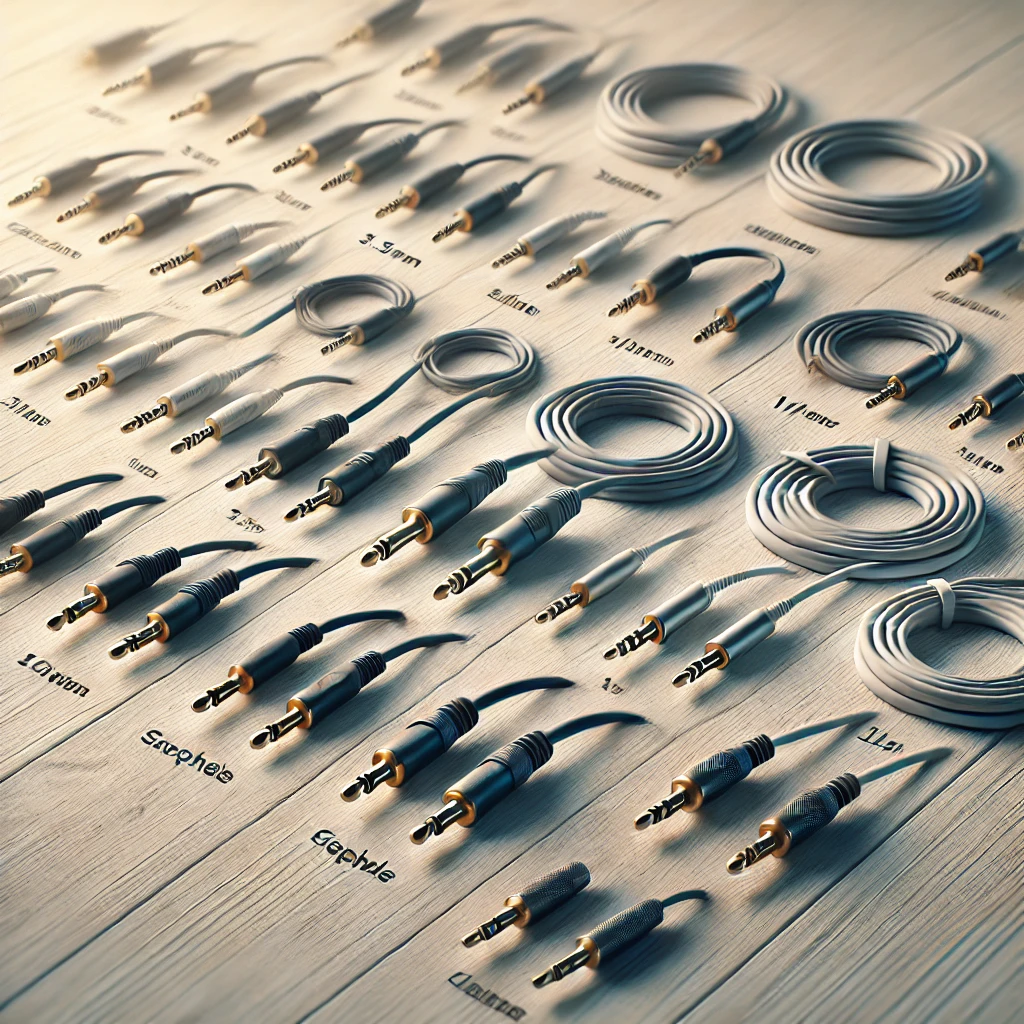Getting Started
Often disregarded in audio equipment, the stereo headphone wire is actually rather important for the whole listening experience. Knowing stereo headphone cables will help you maximize your headphones whether you are an audiophile, a music industry professional, or just someone who appreciates decent sound. This post will look at the several kinds of stereo headphone cables, their characteristics, and offer advice on how to select the appropriate one for your requirements. To help you choose wisely, we will also address the most often asked questions about stereo headphone cables.

A Stereo Headphone Cable Is
The actual link sending audio signals from your audio device—such as a smartphone, computer, or amplifier—to your headphones is a stereo headphone cable. Usually, this cable has three key parts: a ground wire and two wires for the left and right audio channels. Depending on the headphone type and intended application, these cables are sometimes finished with 3.5mm, 6.35mm, or other connections fitting into your device.
Though it serves quite a basic purpose, the quality of the stereo headphone cable may greatly affect general performance, longevity, and sound quality. Enhancing your listening experience depends on your knowledge of the several varieties of cables and their characteristics.
Types of Stereo Headphone Wires
Many different kinds of stereo headphone cables exist, each one made to fit particular requirements. The most typical ones let us look at:
1. 3.5mm Stereo Cable
Consumer-grade headphones most often use the 3.5mm cable connection. Commonly seen in daily audio equipment including cellphones, tablets, and laptops. Usually a 3.5mm TRS (Tip-Ring-Sleeve) connector, this kind of cable has the left channel on the tip, the right channel on the ring, and the sleeve as ground.
- Pros: Cheap, readily available, and universally compatible.
- Cons: Can be susceptible to wear and tear, restricted to lower-end audio equipment.
2. 6.35mm Stereo Cable
Often referred to as a 1/4-inch jack, the 6.35mm cable is usually seen on professional-grade headphones, especially in music studios, and high-end audio equipment. Compared to the 3.5mm cable, it offers more durability and sound quality.
- Pros: Often found in professional settings, better sound quality and lifetime.
- Cons: Without an adapter, not compatible with ordinary consumer devices.
3. Balanced Cables (XLR or TRS)
Balanced cables increase signal clarity and noise reduction by using extra wire. Usually, these cables are found in professional or high-end audio systems. Though they are more costly and need appropriate equipment, they provide better audio performance.
- Pros: Improved sound quality, less interference.
- Cons: Pricier, needs suitable equipment.
4. Cables for Lightning and USB-C
Particularly for mobile devices, certain contemporary headphones now include USB-C or Lightning connections. These cables let digital audio signal transmission run, which can provide better sound quality than analog ones.
- Pros: Digital audio transmission, better sound quality.
- Cons: Device compatibility problems, reduced flexibility with other audio equipment.
Choosing the Correct Stereo Headphone Cable
Choosing the correct stereo headphone cable goes beyond simply choosing the priciest one. You must take into account many elements affecting your audio experience. Here is how to choose wisely:
1. Device Compatibility
The first thing to look at is whether the cable works with your audio equipment. While a 3.5mm cable might be ideal for portable devices, a 6.35mm or balanced cable could be more appropriate should you have high-end audio equipment.
2. Build Quality and Durability
Search for cables constructed of premium materials. While gold-plated connections may offer greater corrosion resistance, Teflon or braided cables usually last longer.
3. Length of Cable
Make sure the cable length fits your requirements. A shorter cable might be preferable for on-the-go use, but a longer one could be perfect if you have to move about a lot.
4. Sound Quality
Although the cable by itself might not significantly enhance sound quality, the kind of cable you select can affect signal transmission. For instance, balanced wires lower noise and maintain audio fidelity.
5. Cost in Relation to Worth
Although buying the priciest cable is alluring, its value lies in its features and compatibility, not its cost. Look at reviews and pick a cable that strikes the best cost-performance balance.
Typical Problems with Stereo Headphone Cables
Like any other electronic device, stereo headphone wires might develop problems over time. Here are a few typical issues and their solutions:
1. Fraying Cables
Especially for those who use their headphones often, cable fraying is among the most prevalent problems. A cable with a robust, braided construction or a cable shield would help to avoid this.
2. Broken or Loose Connectors
With time, the connectors on your headphone wire may come loose or break. Constant plugging and unplugging usually causes this. Avoid cable twisting and make sure you insert and remove it carefully to avoid damage.
3. Decline in Sound Quality
Should you see a decline in sound quality, inspect the cable for any apparent wear. Occasionally, changing the cable to a better quality one or a balanced cable will help to restore sound integrity.
READ ABOUT: A Comprehensive Guide for Smooth Audio Experience from USB-C to Headphone Jack
Frequently Asked Questions Regarding Stereo Headphone Cables
1. May I use any stereo headphone cable with my headphones?
No, you have to make sure the cable works with your audio device and the headphone jack. For instance, unless you use an adaptor, 3.5mm cables will not fit a 6.35mm jack.
2. What distinguishes TRS from TRRS cables?
While TRRS (Tip-Ring-Ring-Sleeve) cables are for both stereo audio and a microphone signal, usually used with smartphones and gaming headsets, TRS (Tip-Ring-Sleeve) cables are for stereo audio.
3. Why are balanced cables superior for audio quality?
Balanced cables provide extra wire that helps to balance out interference and noise, hence producing crisper and more accurate sound, particularly in professional audio environments.
4. Which cable is ideal for audiophile headphones?
Balanced cables (such as XLR or TRS) offer the best sound quality for audiophile headphones as they can transmit a purer signal with fewer interferences.
5. How can I stop my headphone cord from breaking?
Yanking or bending the cable sharply will cause damage. A cable with strong, braided construction and strengthened connections will help your headphone cable last longer as well.
Ending Remarks
A key component of your audio system are stereo headphone cables; selecting the correct one can greatly improve your listening experience. Knowing the various cable kinds and their characteristics will help you to guarantee that your headphones work at their best. Always take into account issues like compatibility, durability, and sound quality before buying, whether you want a dependable one for daily listening or a high-quality cable for professional use.

